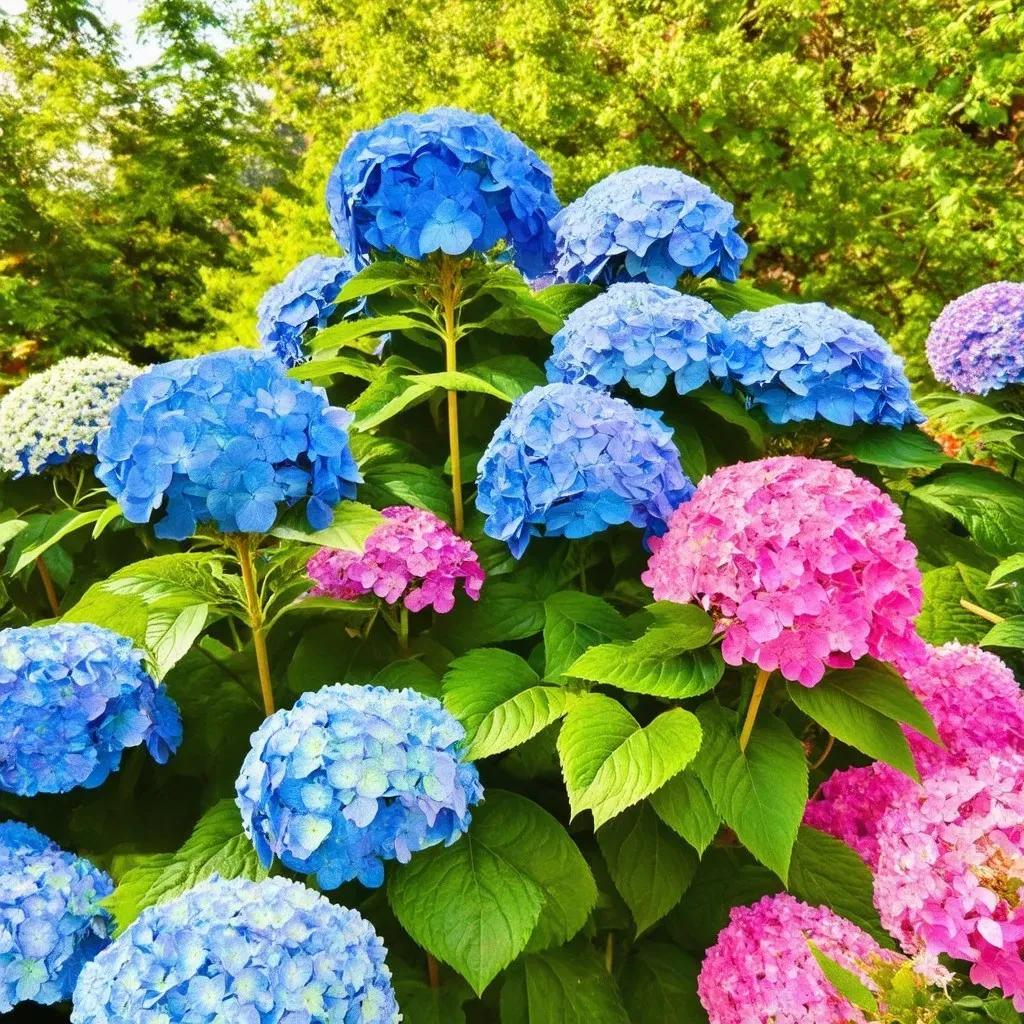Hydrangeas typically bloom from mid-spring through the late summer or early fall. The actual bloom time can vary depending on the specific variety, climate, and the care the plants receive.
Understanding Hydrangea Bloom Times
Hydrangeas are stunning flowering shrubs known for their large, colorful blooms. However, their blooming period can vary significantly based on several factors including the variety, climatic conditions, and how well the plants are cared for. Below is a breakdown of major types of hydrangeas and their general bloom periods:
| Hydrangea Variety | Bloom Time | Bloom Duration |
|---|---|---|
| hydrangea macrophylla | Late spring to early summer | 8-12 weeks |
| Hydrangea paniculata | Early summer to late fall | Up to 12 weeks |
| Hydrangea arborescens | Mid-summer to early fall | 10-12 weeks |
| Hydrangea quercifolia | Late spring to early fall | 6-8 weeks |
| Hydrangea serrata | Late spring to early fall | 6-8 weeks |
Conditions Affecting Hydrangea Blossoms
- Climate: Hydrangeas perform best in temperate regions; they may bloom earlier in warmer climates and later in cooler areas.
- Soil Conditions: Well-drained soil with adequate moisture promotes healthy blooms. Soil pH can also affect flower color, particularly in Hydrangea macrophylla.
- Pruning: Proper pruning is crucial. Depending on the type, hydrangeas bloom on either old wood or new wood, which can significantly affect the timing and quantity of blooms.
Factors Leading to Non-Blooming Hydrangeas
Many gardeners find themselves asking, "why are my hydrangeas not blooming?" Several factors could contribute to hydrangeas not producing flowers. Here are some common causes and solutions:
1. Wrong Pruning Timing
- Cause: Hydrangeas that bloom on old wood, such as H. macrophylla, must be pruned at the right time—typically after flowering.
- Solution: To encourage blooms, only prune immediately after flowering, ensuring to leave healthy buds.
2. Insufficient Sunlight
- Cause: Hydrangeas need at least 4-6 hours of sunlight daily.
- Solution: Evaluate the planting location and consider moving the plant to a sunnier spot if necessary.
3. Nutritional Deficiencies
- Cause: Lack of essential nutrients can stunt growth and blooming.
- Solution: Fertilize with a balanced fertilizer to boost plant health, especially in spring.
4. Environmental Stress
- Cause: Rapid temperature swings, drought, or excessive rainfall can affect blooming.
- Solution: Ensure consistent watering during dry spells and protect against extreme weather conditions.
5. Age of the Plant
- Cause: Young plants may take a few years to establish before they begin to bloom.
- Solution: Be patient; ensure proper care but expect flowers only after a couple of years.
How Long Do Hydrangeas Bloom?
It’s essential to know how long you can expect those lovely flowers to last. Generally, hydrangeas will bloom for:
- 8-12 weeks for most varieties, depending on conditions.
- Some reblooming varieties may provide flowers on and off throughout the growing season.
Below is a quick overview of bloom duration for various types:
| Hydrangea Type | Expected Bloom Time Frame |
|---|---|
| H. macrophylla | 8-12 weeks |
| H. paniculata | 10-12 weeks |
| H. arborescens | 10-12 weeks |
| H. quercifolia | 6-8 weeks |
| H. serrata | 6-8 weeks |
Making Your Hydrangeas Bloom
To encourage blooming, there are several strategies you can employ:
- Pruning and Training: Understand the type of hydrangea you have to prune accordingly.
- Mulching: Apply organic mulch to retain moisture in soil.
- Fertilization: Use a fertilizer with a balanced nutrient profile designed for flowering plants.
- Watering: Maintain consistent moisture, especially during hot and dry periods.
Frequently Asked Questions (FAQs)
When do hydrangeas start to bud?
Hydrangeas typically begin to bud in early spring, around March to April, depending on the climate and variety.
How often do hydrangeas bloom?
Most hydrangea varieties bloom once a year, though reblooming varieties can produce flowers at multiple times throughout the season.
What month do hydrangeas bloom?
Blooming generally starts from May and can last until late summer or early fall.
Why aren’t my hydrangeas blooming?
This might be due to improper pruning, inadequate sunlight, nutrient deficiencies, or environmental stress.
How can I encourage hydrangeas to bloom?
Ensure proper care through correct watering, fertilization, sunlight exposure, and appropriate pruning schedules.
For more detailed guidance on hydrangeas and their blooming tendencies, you can explore The Spruce and Gardening Know How.


By understanding the blooming habits and needs of hydrangeas, you can create a vibrant display in your garden that lasts throughout the growing season. With the right care, your hydrangeas can thrive and provide stunning blooms year after year.


